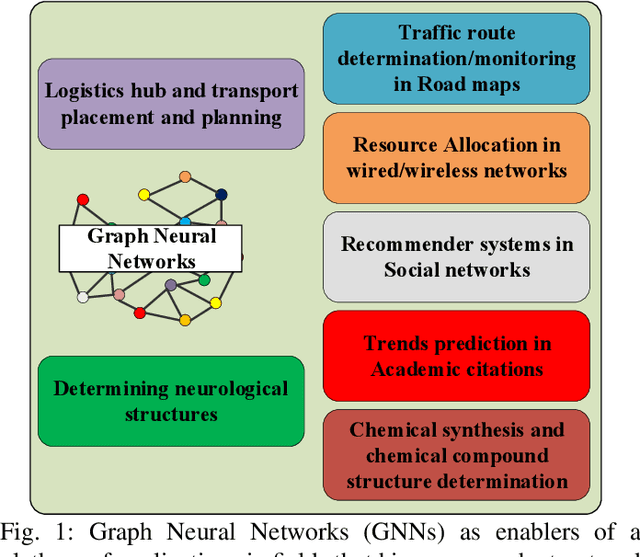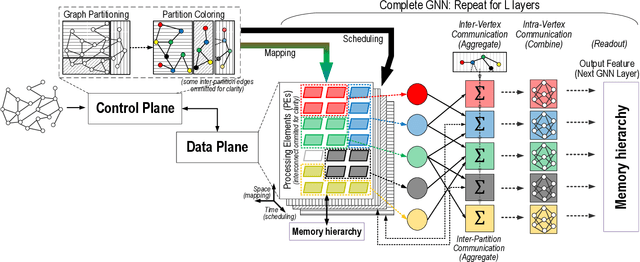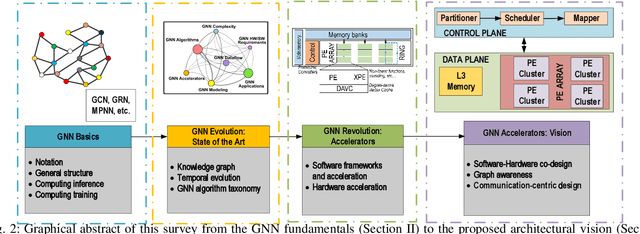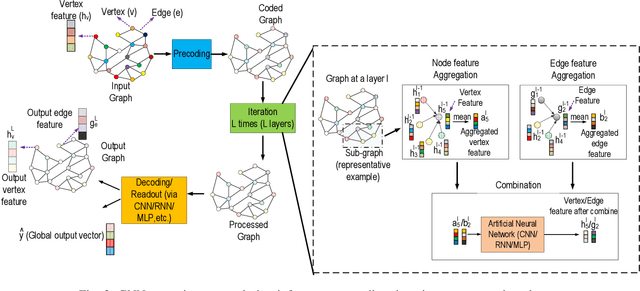Robert Guirado
Computing Graph Neural Networks: A Survey from Algorithms to Accelerators
Sep 30, 2020



Abstract:Graph Neural Networks (GNNs) have exploded onto the machine learning scene in recent years owing to their capability to model and learn from graph-structured data. Such an ability has strong implications in a wide variety of fields whose data is inherently relational, for which conventional neural networks do not perform well. Indeed, as recent reviews can attest, research in the area of GNNs has grown rapidly and has lead to the development of a variety of GNN algorithm variants as well as to the exploration of groundbreaking applications in chemistry, neurology, electronics, or communication networks, among others. At the current stage of research, however, the efficient processing of GNNs is still an open challenge for several reasons. Besides of their novelty, GNNs are hard to compute due to their dependence on the input graph, their combination of dense and very sparse operations, or the need to scale to huge graphs in some applications. In this context, this paper aims to make two main contributions. On the one hand, a review of the field of GNNs is presented from the perspective of computing. This includes a brief tutorial on the GNN fundamentals, an overview of the evolution of the field in the last decade, and a summary of operations carried out in the multiple phases of different GNN algorithm variants. On the other hand, an in-depth analysis of current software and hardware acceleration schemes is provided, from which a hardware-software, graph-aware, and communication-centric vision for GNN accelerators is distilled.
 Add to Chrome
Add to Chrome Add to Firefox
Add to Firefox Add to Edge
Add to Edge